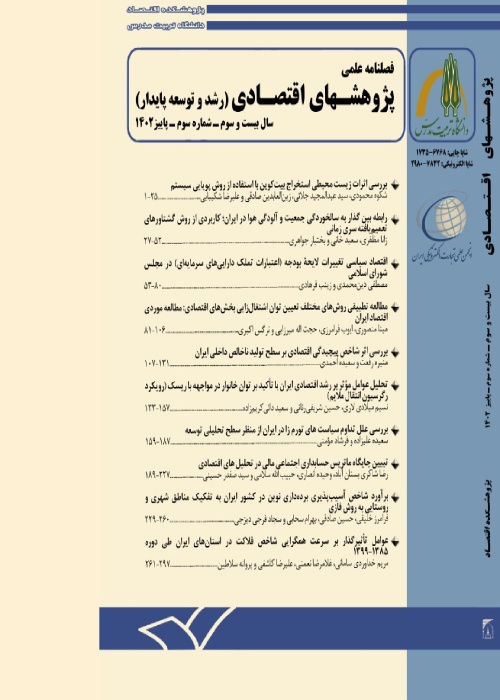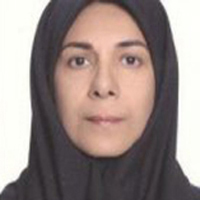Comprehensive Combined Index of Vulnerability and Resilience in Selected Countries (G7 and MENA); Graph Theory Approach
Internal and external economic crises and shocks are inevitable in different countries. Many countries are unable to resist economic crises and witnessed undesirable economic events. On the other hand, some countries are highly resilient to domestic and foreign economic crises. The single-product countries are more vulnerable to economic crises than other countries. Resilience of the economy can help move the economy towards sustainable development.Sustainable development is a development that meets the current human needs without harming the capabilities of the future generations to meet their needs. For sustainable development, four dimensions including governance, economic, environmental and social dimensions are considered. Analyzing the growth history of countries reveals the fact that international trade has been the engine of economic prosperity and expansion of most advanced and developing societies. In order to achieve sustainable development, it is necessary to have trade relations with other countries of the world.Also, the country's distance from international trade centers due to specific geographical and political conditions will be an obstacle to the development of the economy. In this way, the peripheral dimension is proposed as the fifth dimension of sustainable development to show the political and geographical isolation of the country. In this article, first, the dimensions of sustainable development and its subgroup variables are determined. Then the impact of sustainable development dimensions on the state of economic vulnerability and resilience of different countries are analyzed. The statistical sample includes two groups of countries including G7 member countries and MENA countries. This study investigates the state of vulnerability and resilience (VR) of these two groups during 2017-2020.
In this article, Graph theory and Tarjan's algorithm are used to analyze the relationships within the network of variables influencing sustainable development and to examine the relationship between these variables and economic vulnerability and resilience. Tarjan's algorithm is looking for a strongly connected graph that can identify the fundamental variables affecting economic vulnerability and resilience and finally determine the maximal graph. The final output of Tarjan's algorithm is n* variables for measuring VR. Tarjan's algorithm divides the variables into two general parts; The first group of variables that causes vulnerability and resilience and the second group of variables that is created as a result of resilience and vulnerability. The initial set of variables in the dimensions of sustainable development includes economic, social, environmental, governance and peripheral dimensions. After identifying the relationships between the 43 variables presented, a graph is drawn that expresses the relationships between the desired variables.
The results of the algorithm reveal the fact that the resilience of the model is due to the economic and governance dimensions. If the "economic" or the "governance” dimension are specifically removed, the capacity of the directed graph which is resilient to the strongly connected feature will definitely be lost. Since governance and economic dimensions directly affect other dimensions, they are called as control dimensions. On the other hand, social, environmental and peripheral dimensions are considered as contingent dimensions.Therefore, contingent dimensions are directly dependent and influenced by control dimensions. In this research, the Net Vulnerability and Resilience Index (NVRI) is separated in all dimensions and calculated in the range of -1 and 1. The NVRI time series is shown during the period and based on the sample countries. The results indicate that in all periods, the status of the NVRI index of the G7 countries was better than the MENA countries, and all the G7 members had resilient economies.
According to the index calculations, the countries are classified into four states of uncontrolled vulnerable, limited vulnerable, unstable resilient and sustainable resilient. The G7 countries are sustainable and resilient, which means that in these countries, resilience has surpassed vulnerability. The countries of Oman, Kuwait, Saudi Arabia, UAE, Occupied Palestine and Bahrain from the MENA group are also sustainable and resilient.The main strength of MENA countries, which are in the group of sustainable resilient, is focused on the peripheral dimension and how these countries interact with the global economy. Among these countries, the UAE and occupied Palestine have a more suitable situation. MENA countries are mainly in the pure and uncontrolled vulnerable group. The governance dimension and then the economic dimension are the important factors of the vulnerability of these countries.The temporal analysis of the index for the selected countries shows that the majority of the countries that are in the sustainable resilient group did not change their situation during the period under review. Iran is an uncontrolled vulnerable during the years 2017-2020, and in all periods, the index in governance and economic dimensions has been negative and vulnerability is more than resilience.The analysis of the NVRI index examines the strengths and weaknesses of MENA and G7 countries with a sustainable development approach. It helps the policymakers to get strategic suggestions to improve the situation in weaker countries by following the example of the countries that have a better VR state. The goal of quantifying the state of vulnerability and resilience is to achieve sustainable and inclusive growth in accordance with international programs.
- حق عضویت دریافتی صرف حمایت از نشریات عضو و نگهداری، تکمیل و توسعه مگیران میشود.
- پرداخت حق اشتراک و دانلود مقالات اجازه بازنشر آن در سایر رسانههای چاپی و دیجیتال را به کاربر نمیدهد.




